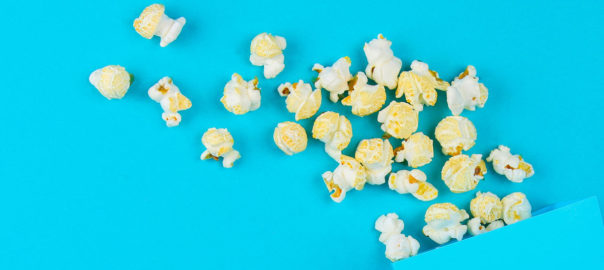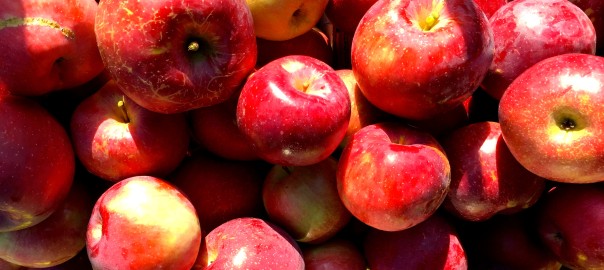|


|

“The micro-media app says it bought billboard space everywhere from Nice airport to the Palais.”
“We’re trying to move away from Facebook as fast as we can.”
“Around 11 percent of internet users were running an ad blocker.”
“If you ‘follow the money,’ Auletta writes, you’ll understand the importance of advertising and the significance of the threats against it, and maybe value it more, or at least disdain it less.” High praise indeed!
“Facebook allowed housing advertisers to block users from seeing their ads if those users had a black, Latino or Asian-American ‘affinity.’”

A few words — or even a few dots — can make a big difference. Compliments of a PAMA Facebook post, BookBub’s 8 Book Description A/B Tests You Need to See …
Emma Watson and the Station of Secrets.
Watch:
Find out how the podcast boom can favor and disfavor diversity in this Columbia Journalism Review article.
Also check out:
10 great podcasts to diversify your listening lineup
Programmatic is like a planet. We live on the thin surface layer but most of the hot stuff is under the surface.
“Facebook just executed what might best be described as a digital advertising coup against rival Google and its DoubleClick empire” by letting publishers use header bidding technology. This could raise ad costs but increase yield, says AdAge.
Drill a hole and peek into the Magma
Or simply find out:

Spotify announced a new product — Vertical Video Ads — which allows advertisers to sponsor playlists. Users agree to watch the full video in exchange for thirty minutes of free listening. These kinds of ads are wins for the advertisers, the users, and the platform. At launch, the branded moments are based around six categories: chill time, workout, party, dinner, focus and sleep—each of which could work well for books from novels (chill time) to cookbooks (dinner) to lifestyle (workout). As with any newly launched ad product, the initial minimums are too great for any but the largest brand budgets. But with time, costs will come down, making this an initiative to watch.
The first outdoor ads targeting Snapchat users for movies are running now in subways in NY and DC:
“Universal Pictures, a longtime Snapchat advertiser, is among the first to test the Snap code marketing for its new movie ‘The Girl On the Train.’ Mysterious billboards will be showing up around subways in New York and Washington, D.C., and in parts of Los Angeles, according to Doug Neil, exec VP of digital marketing at NBC Universal.”
While the premise may induce a painful deja vu for marketers who went through the great QR code marketing hype of a few years ago, the fact that Snapchat is already being used and recognized by a sizable audience makes all the difference. For genres such as YA, a Snap to Unlock campaign could make a delicious teaser.
A new study of teens and people in their twenties shows that users in this age range care about content that can be saved and accessed later and expect ads to be relevant to their interests. Here’s more from eMarketer on the survey.
A new study suggests that more users are inclined to engage with an ad in the middle of the day than at other times during the work week. While ad exposure is valid throughout the day, mid-day is when more users are taking breaks from studying or working and so more apt to click on an ad.
Apples at Union Square Market (c) 2016 Martha Otis

The Wall Street Journal reports on how the millennial news platform .Mic is rethinking video sponsorship. Mic is allowing advertisers to sponsor their highly popular videos on Facebook:
“Instead of selling…ads based on content genre or audience demographics, Mic is putting its editorial videos into categories, such as clips that elicit emotions or videos that celebrate innovation—two popular genres that typically incite people to share, and letting advertisers run ads next to these types of videos.”
While this kind of sponsorship is not useful for any book that needs time to tell its story, it could be very interesting for a book with immediate appeal to millennials with a high education and relatively high HHI.
Have you played around with Google’s Display Ad benchmark tool recently? It can be very useful for setting expectations. Click-through rates seem to be going down across the board. If you set it for U.S. Book ads, the display CTRs range from .04-.6% depending on the size. Mobile only sizes such as 320×50 fare a little better with a .18% CTR. While this is certainly the case for the industry as a whole, Verso’s own click-through rates continue to beat industry averages—ranging from about .10% for desktop to twice that for mobile.
#CTR #Google #data #benchmarks
Long a staple of advertising plans for all manner of products, out-of-home advertising has gained a new edge with digital billboards. Digital capabilities mean advertisers can move much more quickly on campaigns instead of having to plan six to eight months ahead for each iteration. As CMO magazine puts it:
“The integration of data and technology means advertisers can tap into OOH like never before. ‘And it’s really shifting into bringing back the things that digital has kind of lost–the sensory experiences, feelings, and interactions.'”
There’s a reason spending on out of home advertising continues to grow.
#billboards #OOH #digital
As part of IAB’s recent podcast upfronts, ESPN announced that it’s bringing it’s acclaimed 30 for 30 series to podcasts. With in-depth reporting about sports news, 30 for 30 videos appeal to sports fans of a more thoughtful bent . . . which is to say, sports fans who might be inclined to buy books on a subject in an effort to go deeper than in-game color commentary or talk show style chatter. For book publishers who might not be able to afford a :30 ad on ESPN, running mid-roll on a podcast might be a highly targeted ad solution.

SNAPCHAT MATURES
The Wall Street Journal reports that Snapchat is getting older—with 14% of US smartphone owners over 35 years old using the app. While they don’t use it with the same frequency and velocity we see with teenage users, the aging of the user population is a sure sign that the platform is going to give bigger rivals such as Facebook, Instagram and Twitter a run for their money.
SNAPCHAT GAINS MEMORIES
As part of that maturing process, Snapchat introduced “Memories”—a way to save your own Snapchats for future sharing.
ADS ARE DEAD (LONG LIVE ADVERTISING!)
On Digiday, Copyranter asks the question “Does advertising even work anymore?” Then answers it: No! Then qualifies: Kind of. Then flips back to “No!” Then shows you how to sell to advertising-averse Millennials. See what he did there?
GOOGLE HONES ITS TARGETING DATA
With their new “My Activity” page, Google is bringing together what they know about users from Search, Mobile, Browsing and more. This has everything to do with the advertising data wars and their fight with Facebook for supremacy.
THE NEWS OF TUMBLR’S DEATH IS GREATLY EXAGERRATED
The New Republic does a deep dive into Tumblr that shows how the platform remains vital for teens (and, thus, vital for YA marketing strategy).
LOCATION-BASED ADVERTISING GETS AN UPGRADE
The Village Voice looks at whether or not the new LINK NYC systems are good for the city. For sure, they’re good for advertisers in general and Google in particular. Data collected at the kiosks from browsing history will tell advertiser a lot about the demographic profile of the outdoor audience and make for the best targeting we’ve seen from outdoor advertising yet. As consumers though (and we *are* citizens as well as advertisers), it’s worth remembering the internet adage: “If you’re not paying for the product, you are the product.” And it’s worth thinking through the “devil’s advocate” position on ad targeting if we’re to do our jobs as advertisers and citizens equally well.
photo (c) Martha Otis

Bigger is not always better when it comes to influencer marketing:
“For unpaid posts, Instagram influencers with fewer than 1,000 followers have a like rate of about 8 percent, while those with 1,000 to 10,000 followers have a like rate of 4 percent.”
That’s good news for book publishers and any advertiser whose budget is more micro than mega.
Hulu’s SVP of Sales makes a good point in Adweek (caveat emptor: he’s a sales guy, so he’s trying to sell you something). It’s good to know how a site indexes for the target audience, what the most popular content is, etc., but . . .
“. . . those questions and answers come from yesterday’s play book. Hulu’s median age really doesn’t matter. What matters is that we can pinpoint any age group advertisers are trying to reach. It doesn’t matter how we index against millennials or any other audience segment. Why bother with indices? What matters is that we can deliver 100 percent of an advertiser’s target segment. And while popularity of programing is directionally interesting, what’s more interesting is the ability to buy against both heavily streamed shows and shows that are heavily viewed by your target audience.”
In the new media reality, the question becomes: where can we put our ad so it’s served to 100% of the audience and content adjacencies that are right for our book.
Hubspot highlights seven interactive outdoor campaigns that caught their eye. We’ve noticed a couple of these on Next to Now over the past year — including the Women’s Aid poster in London — but it’s good to look at them in one place and remember how outdoor is changing thanks to digital innovation.
More stats from Google that will remind you why you don’t have to make broadcast TV spots any more, including the fact that YouTube reaches more 18-49 year olds on mobile alone than any broadcast or cable TV network.
According to Mashable, fear of mobile ad blocking (FOMAB) outstripped the reality. The mobile ad business continues to do well. But it does look like the scare has helped publishers of all stripes take user experience a little more seriously; if so, then maybe it was a good thing.
Today's image is Cy Twombley's "Untitled I-VI (Green Paintings)" Series on view in the "Unfinished" show currently up at the Met Breur

In celebration of National Poetry Month, give Jonathan Galassi a call and let him read you a poem: 949-342-5374
In celebration of April Fool’s Day: Pigeons with backpacks.
“Pigeons outfitted with lightweight backpacks soared over London from March 14 to 16, collecting air quality data across the city that was shared via Twitter. The Pigeon Air Patrol was a collaboration between Plume Labs and DigitasLBi to raise awareness for an even larger air pollution project to be crowdsourced from London’s largest moving flock: its humans.”
An Instagram for Business post suggests that the visual platform is a great way to reach moms (and dads):
“Instagram found that 93 percent of moms access its network at least once per week, with 68 percent doing so daily.”
They also link to successful campaigns for Campbell’s and Gap Kids.
While brands have been slow to try Facebook’s new Canvas feature, the political campaigns of Ted Cruz and Bernie Sanders have seen good success with it. Facebook client partner Chase Mohney told Digiday:
“Canvas is great for two big reasons. It provides these campaigns with the opportunity to tell an immersive story — their story — using video, stills and calls to action — really whatever works for them. And it’s designed for mobile, which is where the voters campaigns want to reach are spending their time anyway.”
One reason for advertiser reluctance that the article doesn’t mention? Cost. The CPM is in the $450-500 range. That’s just a *wee bit* higher than we normally see with Facebook ads . . . much less rich media available on blue chip sites.
A new study suggests that in the visually complex world of the current Web, simpler messages hold the key to ad effectiveness.
A campaign for the upcoming release of Game of Thrones has dragons “landing” in major cities everywhere. As advertisers, we applaud the innovative nature of the advertising. As city residents, we suspect that if any marketer showed up outside our windows with another jack hammer, just in the name of pulling off a cool marketing stunt, we would ourselves turn into dragons.
Well, we like it a lot. For some reasons why, here is an article from Digiday pointing to smart, fun “conversation-starter” campaigns for Thinx and Caspar on New York subways:
“‘We like subway ads because we want to create a presence in New York City where trends are set,’ Miki Agrawal, CEO and co-founder of Thinx said on stage at Marketing Unbound, the annual conference hosted by the Economist. ‘And we want our ads to be conversation starters for New York subway riders.’”

Adweek points to the hot topics at the recently concluded SXSWi, and they’re not a surprise, but they do underscore areas all marketers need to be aware of as they develop on the near horizon: Messaging, VR, Snapchat.
Gnack, a start-up announced at SXSW is experimenting with ways to make labor-intensive influencer marketing work on a programmatic platform. They’re starting with micro-influencers, those with no more than 10,000 followers—the kinds of influencers, that is, that are more friendly to book budgets.
Apple News is developing a native ad product, worth watching for:
“Apple News will be updated as part of the latest version of iOS, expected to be released next week. Eddy Cue, the Apple executive in charge of online services, told The Wall Street Journal that 40 million people had used the Apple News app in January.”
Everyone in publishing wants to get data on how people read—at least to get information as good as what Amazon and Apple have via Kindle and iBooks. For that reason we applaud Jellybooks’ efforts to democratize this data and read the New York Times article on their presentation at DBW with interest. But there are big limitations with the data collected here. Jellybooks only counts readers reading on special e-readers, who have sought out the Jellybooks platform, read whatever few e-books are available there, and then agree to share the specifics of their reading habits for that particular book. This is a very different kind of person from the avid book buyer who buys, reads, and buys more copies, often in print.
An infographic on Adweek provides great insight into the video watching habits of millennials (as well as which video ads are OK with them, and which are not). Top three video watching sources are YouTube (85%), Netflix (66%), and Facebook (53%).
From Digiday, a little rant in favor of the ultimate non-digital advertising product:
“These days, billboards are viewed as, mostly, for local businesses only. Bull. Brands, if you took just a small part of your worthless social media budget and put up one billboard in a high-visibility spot, you’d see some big-ass ROI in awareness and sales.”
Ad targeting that relies on user profiling makes many users uncomfortable, and not just tinfoil-hatted privacy advocates. But it turns out that people also hate seeing ads that aren’t right for them. The younger the user the more s/he is likely to expect ads that are better targeted.

This article gives a good primer about strategies to get a presence on Snapchat without shelling out the $750,000 per day spend. We’ve noticed that many of our clients are on board with recommendation number one: Replace your Twitter Avatars with Snapcodes.
Instagram announces a partnership with forty outside companies to help with various phases of Instagram advertising: from planning and execution to content partnerships. This Business Insider article talks about what this means.
Reality TV meets outdoor advertising with an Xbox campaign: eight people are standing outside on a London billboard undergoing arctic blasts and continual video streaming while viewers can vote on what kind of conditions they should be subjected to. Last one standing “wins.” The real winner, of course, is Xbox.
According to this eMarketer article, mobile is the way to reach young moms, not just with information, but increasingly with buy links:
“According to September 2015 research by Roth Capital Partners (ROTH), almost half (46.8%) of mother internet users ages 20 to 35 primarily made digital purchases via their mobile phone or tablet.”
This Seth Godin article articulates the difference between brand and direct marketing in a way that might have seemed self-evident 20 years ago, but has become increasingly clouded in a world filled with data where every ad budget has to respond in some way to data. This is a crucial question for book publishers, which used to be 100% clear that they were doing brand advertising — leaving the direct marketing to booksellers. But in the world of digital advertising and direct selling by book publishers (however low a priority it remains) those distinctions are getting cloudy.
The IAB makes the case that ad blocking is best addressed not by blocking ad blockers, but by fixing the “pain points” that cause people to want ad blockers: slow loading pages because of tracking software, roll-overs, endless surveys, etc.
This article in the FT reports that Snapchat is generating 6 billion video views on its app every day. This is triple what they were seeing in May, and approaching FB’s 8 billion video views per day. This article in Business Insider is where you can read about it if you’re not an FT subscriber.
As desktop use (and therefore use of cookies) declines, Pandora is taking steps to get better at identifying users on mobile devices.